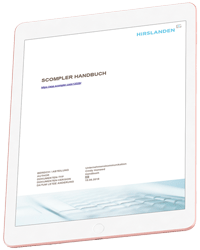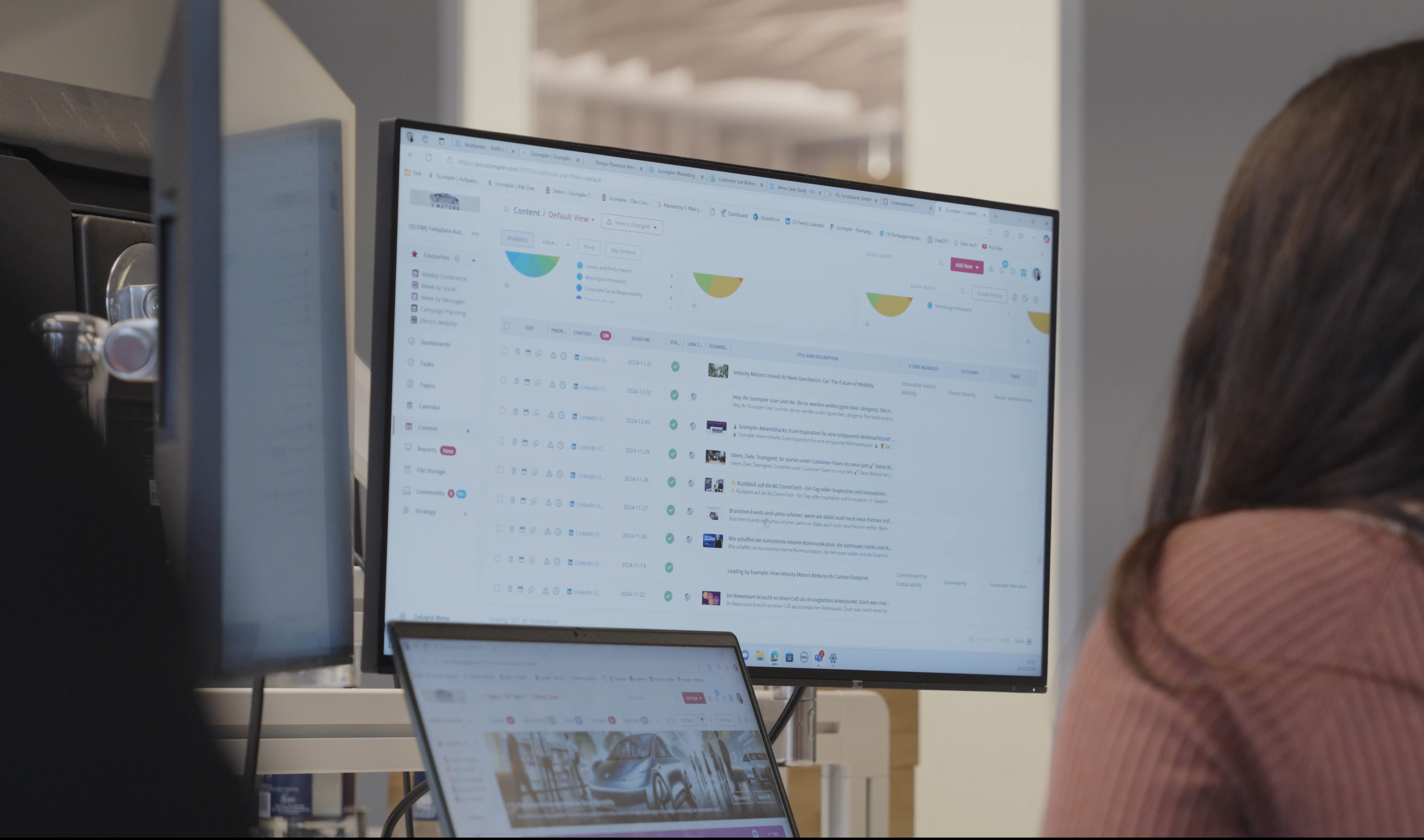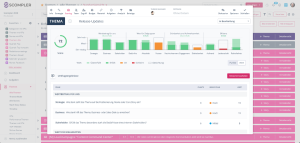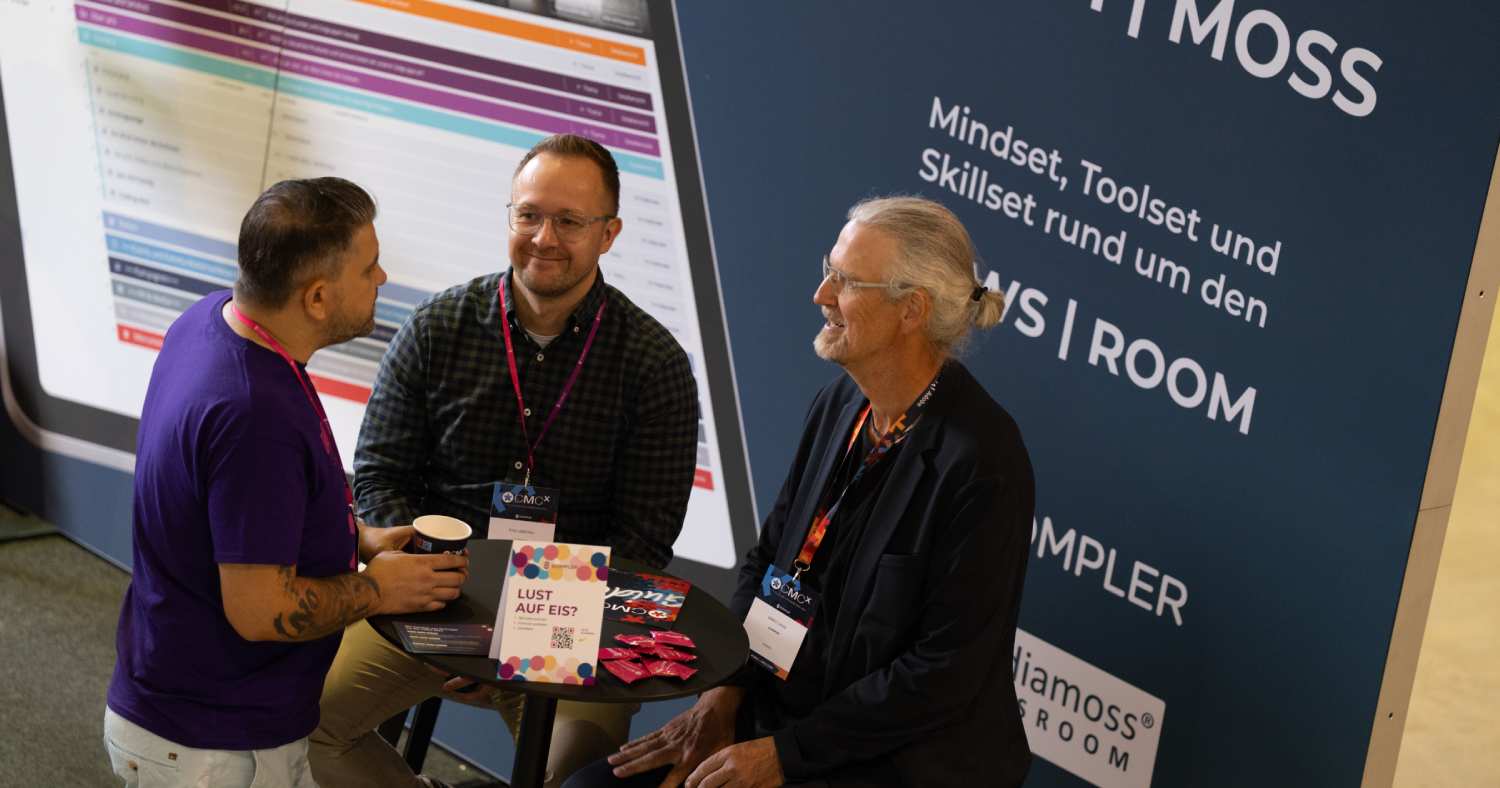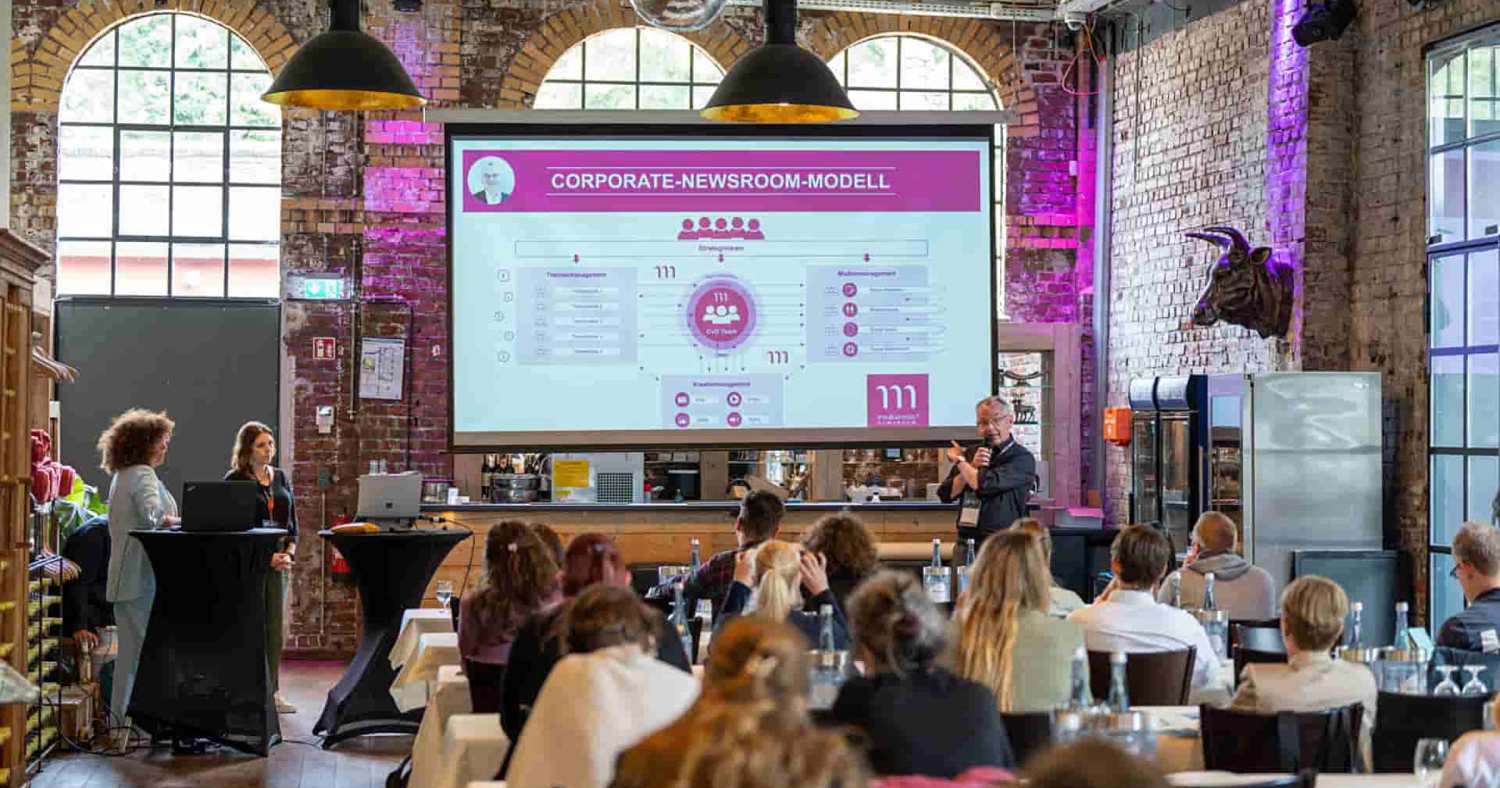
One company - one voice? That was a long way off
Our conversation with Frank Nehlig and Cindy Hameed, who are primarily responsible for the introduction of the newsroom and Scompler , offers extremely exciting insights: on the one hand, into an extremely successful change management process and, on the other, into the challenges faced by a complex company when restructuring its communication. The need for significantly better coordination and greater transparency within and between corporate communications and marketing at Hirslanden has been growing since 2016. People were increasingly dissatisfied with the fact that the communication measures of the individual clinics and the head office were barely orchestrated: Little was known about each other's ongoing activities and upcoming projects, they were unable to provide timely information, learn from each other or exchange ideas. Communication planning was also almost impossible to manage. The classic: far too many decentralized Excel files without any links," explains Frank Nehlig. The company simply did not speak with one voice. So it was high time to fundamentally change communication.
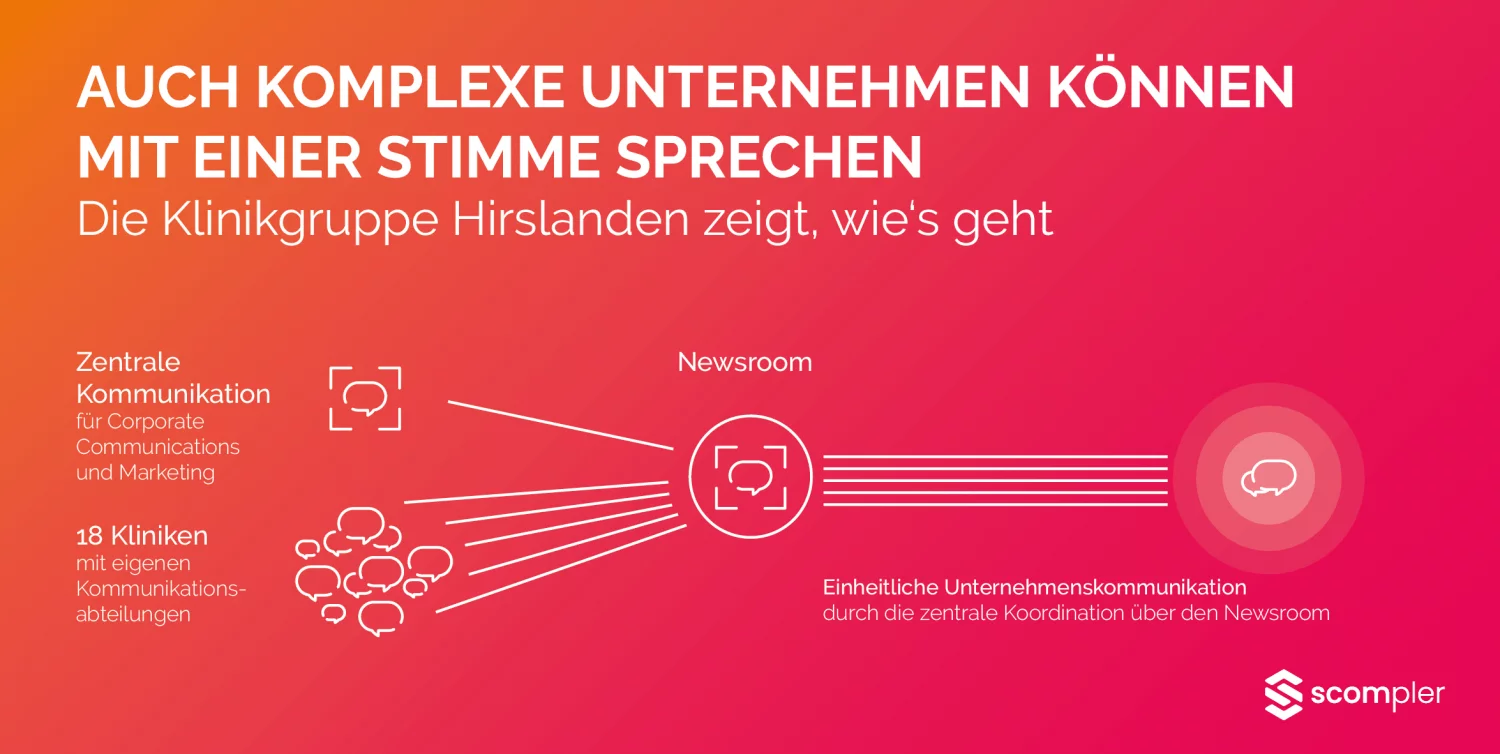
Inspiration from the market environment
When Frank Nehlig joined Hirslanden in 2016, he brought with him the idea of establishing a newsroom for 18 clinics and such a broad range of topics in order to come a step closer to the goal of coordinated and integrated communication. Further inspiration came from specialist events at which a number of companies spoke about their newsroom approaches - including Mobiliar, SUVA and PostFinance.
"We wanted more than just a replacement for our Excel spreadsheets"
"We then got to know Scompler through discussions with SUVA and quickly realized that it covered many of our requirements," says Nehlig, describing the start of the active search for a suitable tool for Hirslanden.
Usability is the be-all and end-all for user acceptance
For Cindy Hameed, the focus was clearly on the future users: "I have already introduced two other tools in the company and know very well that user-friendliness is the be-all and end-all for employee acceptance. And Scompler is simply way ahead in this respect."
The intuitive menu navigation and the many options for customizing and hiding functionalities were found to be extremely helpful. The platform could be kept very lean and clear for users at the beginning, and then more strategy attributes could be added step by step. "I just loved how customizable Scompler was to our needs," says Hameed.
And Cindy Hameed sees another point at Scompler as a huge plus:
"The following was not a factor in our decision to go with Scompler, because I didn't even know that at the time. But I am absolutely thrilled with how quickly Scompler implements customizations in the software that we need for the clinic group. When I receive functional change requests from the clinics, I quickly discuss them with Scompler, I always feel understood and we find a solution. And in two to three weeks, i.e. one "sprint" (SCRUM) later, the result is implemented. That's great! That helps me so much with user acceptance, because everyone feels taken seriously and respected."
The strategic newsroom approach and the topic structure in Scompler are a perfect fit for Hirslanden
Parallel to, and perhaps precisely because of, the introduction of the newsroom approach and the search for tools, a rethink also began in Hirslanden's marketing department. The previously traditional product managers were now organized in the new "Theme Management" team and the head of this team was heavily involved in the development of the newsroom concept.
Nehlig and Hameed agree: "Yes, we wanted to communicate even more strategically. And that's what Scompler supports best."
The path to change leads through many doors - and you need the right key for each one
The two change management experts knew that they would be "drilling thick planks" with the change from channel-oriented to topic-oriented work, the establishment of the newsroom and the introduction of Scompler. They approached the change all the more patiently and cautiously, so that everyone involved was always involved and motivated to participate in the process.
Interim status about 10 months after the introduction of the newsroom and Scompler
Hirslanden is already benefiting in many ways. Rosanna di Bello, Team Leader Marketing Communication & Campaigns, summarizes: "We used to work with countless Excel plans and had to actively obtain information from the clinics. That was a huge coordination effort. Now we discuss upcoming measures in weekly editorial meetings and Scompler forms the basis for this as a Group-wide planning tool. The corporate newsroom and Scompler help us to implement the 'content first' approach and thus coordinate measures much better across the Group."
Frank Nehlig is also pleased with the benefits of the new way of working: "We have a much clearer overview of what we have already done and why. And we can now see for ourselves and also use the reports to show the Group management how we have progressed."
The change process that has been so successful at Hirslanden can be divided into four phases:
A small project team designs the new newsroom strategically and plans the first organizational steps. At the same time, this newsroom is also being physically created and set up.
Part of the entire team is selected as a pilot group. Hirslanden is starting with 6 of 18 clinics and part of the Corporate Office. The pilot group will be thoroughly familiarized with Scompler and the new processes and structures and will receive individual support if required.
Once the pilot group felt that everything was running smoothly, the newsroom and Scompler were rolled out company-wide. Cindy Hameed: "The process started all over again, but now on a much larger scale: training, individual support, continuous joint optimization, software adjustments."
Now we will move on to the next phase. Nehlig: "So far, we have been asking the team members in the clinics: 'What do you actually do? Now we are starting to ask: 'Why are you doing this? And how do you do it?', paving the way for a much more strategic approach to communication."
Would you like to optimize internal collaboration as well as coordination and approval processes in your team? Click here for our detailed customer story with the Hirslanden Private Hospital Group.
